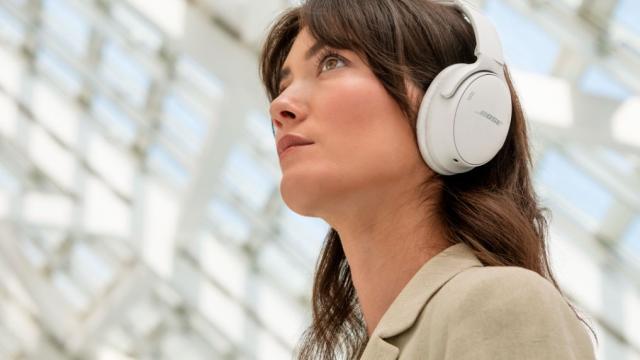Which Wave Behavior Do Noise Cancelling Headphones Use?
As a professional photographer, the importance of noise cancelling headphones becomes evident as you navigate through bustling environments, such as wedding venues or public events. Understanding which wave behavior these devices utilize can enhance your experience, allowing you to focus more on your craft rather than the distractions surrounding you.
Noise cancelling technology works by manipulating sound waves, specifically through physical principles like phase cancellation. This complex behavior significantly contributes to the efficacy of noise-cancelling headphones, making them a crucial accessory for photographers who need to maintain an ideal mental space amidst chaos. In this article, we will explore the intricacies of wave behavior, identify the types of noise cancellation, and assess their relevance for photographers.

The Basics of Wave Behavior
Understanding wave behavior in sound is essential for grasping how noise cancelling technology works. Sound waves are essentially vibrations traveling through the air, encapsulated in compressions and rarefactions. When you come across sound waves from various sourceslike people talking, music playing, or even machinerythe resulting auditory chaos can be overwhelming.
1. The Concept of Phase Cancellation
Phase cancellation plays a crucial role in noise cancelling headphones. This phenomenon occurs when two sound waves of the same frequency and amplitude interact, resulting in a reduction of the overall sound level. Essentially, when a sound wave meets another identical wave that is inverted, they will cancel each other out, creating silence.
The technology behind this can be illustrated through an equation: y = A*cos(t + ) where A is the amplitude, is the angular frequency, t is time, and is the phase shift. If you introduce a phase shift of 180 degrees, the resultant wave will achieve cancellation. This principle is the backbone of active noise cancellation (ANC), which is utilized in most high-quality headphones available today.

Active vs. Passive Noise Cancellation
While understanding which wave behavior noise cancelling headphones use is vital, it is equally important to differentiate between active and passive noise cancellation. Each has unique characteristics that can serve different contexts, especially in photography.
2. Active Noise Cancellation (ANC)
Active noise cancellation employs microphones to detect external sound. Once detected, the headphones generate sound waves designed to cancel the external noise through phase inversion. This dual approach allows for a serene auditory environment, ideal for photographers particularly in settings where concentration is paramount.
3. Passive Noise Cancellation
On the other hand, passive noise cancellation does not utilize any electronic means. Instead, it relies on the physical design of the headphones to create a seal that blocks external sounds. This is achieved through padded ear cups that minimize sound transmission, crucial when shooting in noisy environments.
For more insights on how many decibels noise cancelling headphones can block, check out this article.

Why Professionals Should Consider Noise Cancelling Headphones
Noise cancelling headphones cater specifically to the needs of professional photographers. With the dual functionalities of ANC and passive cancellation, they help photographers focus on their work, whether it's capturing the perfect moment at a wedding or scouting locations in urban settings.
4. Benefits for Professional Photographers
Some benefits of using noise cancelling headphones include:
- Enhanced Focus: With reduced ambient noise, you can concentrate better on your craft.
- Improved Emotional State: A serene auditory environment may help manage stress during hectic shoots.
- Quality Control: Listening to audio feedback while shooting becomes crystal clear, allowing you to make immediate adjustments.

Caveats and Considerations
Despite their advantages, there are certain caveats to using noise cancelling headphones. Some users report discomfort when wearing them for extended periods, while others experience feelings of dizziness or nausea due to pressure changes in the ears. To mitigate these effects, its wise to follow guidelines on how to use noise cancelling headphones effectively. If you are interested in why some users experience discomfort, take a look at this resource.
5. Tips for Optimizing Your Experience
Here are some tips to maximize the effectiveness of your noise cancelling headphones:
- Test Before Purchase: Try different models to see which fits and cancels noise the best.
- Adjust Settings: Use any adjustable ANC settings available on your device to customize your experience.
- Regular Maintenance: Keep your headphones clean and in good working condition to extend their lifespan.
Conclusion
Understanding which wave behavior do noise cancelling headphones use and how it can benefit you as a photographer is essential for enhancing your working environment. With both active and passive noise cancellation methods available, it is crucial to choose the right headphones tailored to your specific needs. As you immerse yourself in your craft, let the silence empower your vision.
FAQs
Q: Do all noise cancelling headphones work the same way?
A: No, different models may have varying levels of effectiveness and approach to noise cancellation.
Q: Can noise cancelling headphones harm my hearing?
A: Generally, they are safe when used correctly, but always listen at moderate volumes.
Q: Why do some headphones provide less noise cancellation?
A: The performance can vary based on design, fit, and technology used.
As an Amazon Associate, I earn from qualifying purchases.

